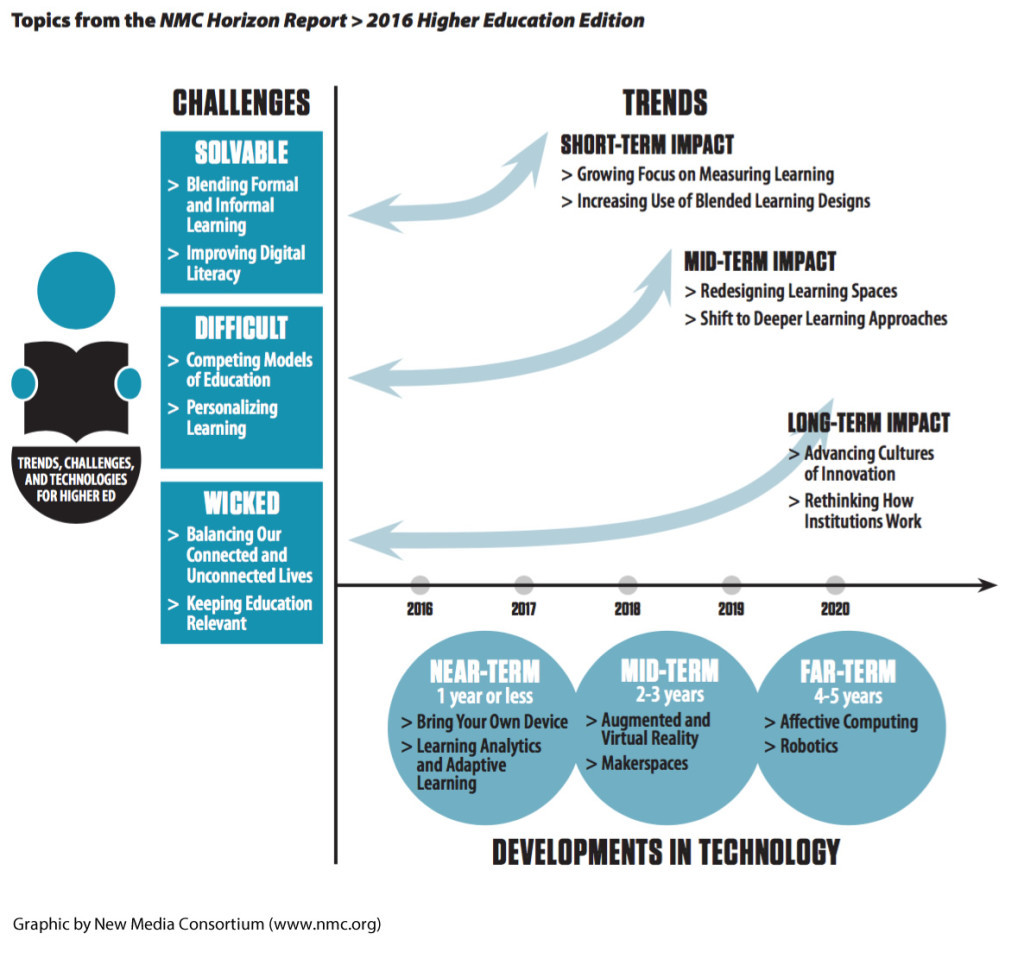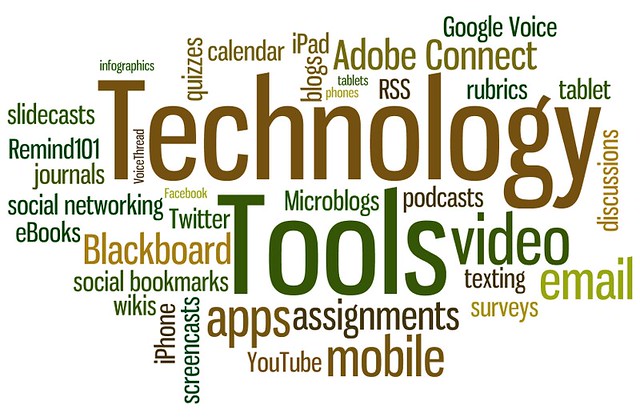The New Media Consortium (NMC) and EDUCAUSE Learning Initiative (ELI) have jointly released the NMC Horizon Report > 2016 Higher Education Edition. This 13th edition describes annual findings from the NMC Horizon Project, an ongoing research project designed to identify and describe emerging technologies likely to have an impact on learning, teaching, and creative inquiry in higher education.
The report identifies six key trends, six significant challenges, and six important developments in educational technology across three adoption horizons spanning over the next one to five years, giving campus leaders, educational technologists, and faculty a valuable guide for strategic technology planning. The report provides higher education leaders with in-depth insight into how trends and challenges are accelerating and impeding the adoption of educational technology, along with their implications for policy, leadership, and practice.
“The release of this report kicks off the 15th year of the NMC Horizon Project, which has sparked crucial conversations and progressive strategies in institutions all over the world,”says Larry Johnson, Chief Executive Officer of the NMC. “We are so appreciative of ELI’s continued support and collaboration. Together we have been able to regularly provide timely analysis to universities and colleges.”
“This year’s report addresses a number of positive trends that are taking root in higher education,” notes ELI Director Malcolm Brown. “More institutions are developing programs that enable students and faculty to create and contribute innovations that advance national economies, and they are also reimagining the spaces and resources accessible to them to spur this kind of creativity.”
[Watch the video summary]
Key Trends Accelerating Higher Education Technology Adoption
The NMC Horizon Report > 2016 Higher Education Edition identifies “Advancing Cultures of Innovation” and “Rethinking How Institutions Work” as long-term impact trends that for years affected decision-making and will continue to accelerate the adoption of educational technology in higher education over the next five years. “Redesigning Learning Spaces” and the “Shift to Deeper Learning Approaches” are mid-term impact trends expected to drive technology use in the next three to five years; meanwhile, “Growing Focus on Measuring Learning” and “Increasing Use of Blended Learning” are short-term impact trends, anticipated to impact institutions for the next one to two years before becoming commonplace.
Significant Challenges Impeding Higher Education Technology Adoption
A number of challenges are acknowledged as barriers to the mainstream use of technology in higher education. “Blending Formal and Informal Learning” and “Improving Digital Literacy” are perceived as solvable challenges, meaning they are well-understood and solutions have been identified. “Competing Models of Education” and “Personalizing Learning” are considered difficult challenges, which are defined and well understood but with solutions that are elusive. Described as wicked challenges are “Balancing Our Connected and Unconnected Lives” and “Keeping Education Relevant.” Challenges in this category are complex to define, making them more difficult to address.
Important Developments in Educational Technology for Higher Education
Additionally, the report identifies bring your own device (BYOD) and learning analytics and adaptive learning as digital strategies and technologies expected to enter mainstream use in the near-term horizon of one year or less. Augmented and virtual reality technologies and makerspaces are seen in the mid-term horizon of two to three years; affective computing and robotics are seen emerging in the far-term horizon of four to five years.

The subject matter in this report was identified through a qualitative research process designed by the NMC and collaboratively conducted by the NMC and ELI that engaged an international body of experts in higher education, technology, business, and other fields around a set of research questions designed to surface significant trends and challenges and to identify emerging technologies with a strong likelihood of adoption in higher education. The report details the areas in which these experts were in strong agreement.




